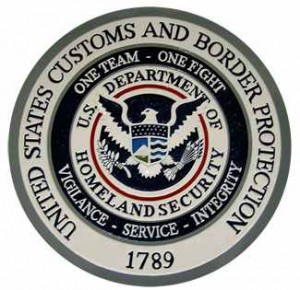CBP Intercepts Rare Pests in Cut Flower, Produce Shipments
Written by Post Public Information Representative, Jul 20, 2019, 0 Comments
LAREDO, Texas – U.S. Customs and Border Protection agriculture specialists at Laredo Port of Entry discovered two significant rare pests and a third was confirmed as a first time find in the nation during the month of June.
The interceptions occurred during the second week of June; both pests were confirmed as first in the port interceptions. Additionally, a pest interception on a shipment of cut palm in February of this year was confirmed as a first of its kind in the country on June 12, making it a first in the nation interception for the port of Laredo.
“The discovery of three significant pests, including a confirmed first in nation interception, underscores the meticulous work of our frontline CBP agriculture specialists in the cargo environment and the importance of that work,” said Port Director Albert Flores, Laredo Port of Entry. “These notable interceptions are instrumental in protecting American agriculture from serious economic harm that can be inflicted by infiltration of pest species not known to exist in the U.S.”
On June 5, agriculture specialists at the World Trade Bridge import lot inspected a shipment of cut flowers. During the examination of a sample of tweedia flowers, agriculture specialists intercepted a squash bug later identified by a United States Department of Agriculture – Animal and Plant Health Inspection Service – Plant Protection and Quarantine (USDA-APHIS-PPQ) entomologist as Nirovecus claviger Stal (Coreidae). Subsequently, on June 8, agriculture specialists supervising the trans-loading of restricted produce captured a butterfly within a shipment of papaya. The pest was later identified by a USDA-APHIS-PPQ entomologist as Celaenorrhinus fritzgaertneri (Bailey) in the Hesperiidae family. Both insects were considered quarantine significant by the USDA-APHIS-PPQ as both pests are plant feeders and are not known to occur in the United States. These incidents mark the first time these pests have been intercepted at the port of Laredo.
Additionally, on June 12, USDA-APHIS-PPQ confirmed that a pest found during the month of February was in fact a first in the nation interception. The pest was found during an inspection at the Colombia-Solidarity Bridge Import lot where agriculture specialists were inspecting sample bundles of cut palm. Upon inspection, an agriculture specialist encountered a butterfly pupa. The specimen was transferred over to USDAAPHIS-PPQ for identification, and a USDA entomologist from the USDA Agricultural Research Service Systematic Entomology Laboratory in Washington, D.C. determined the pest to be Catasticta flisa (Herrich-Schaffer) (Pieridae). This was the first time a species-level identification of this pest had been made for a specimen intercepted at any US port of entry during the course of agricultural inspection operations according to records in USDA’s Agricultural Quarantine Activity System: Pest Interception Database.
These interceptions are examples of the diligent work CBP agriculture specialists do on a daily basis and are crucial in preventing foreign pests and diseases from becoming established in the U.S. Pests that are not known to occur in the U.S. may be detrimental to the nation’s agriculture industry. These pests feed on leaves, flowers and fruits and may serve as vectors for plant diseases. The papaya shipment was denied entry and returned to Mexico; the cut flower and greenery shipments were turned over to USDA-APHIS-PPQ for treatment. CBP agriculture specialists continue to fulfill CBP’s agriculture mission by excluding harmful pests and diseases from becoming established in the U.S.




